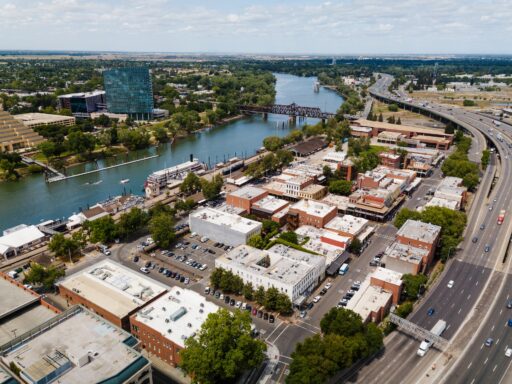Often referred to as the “City of Trees”, Sacramento is known for its beautiful and verdantly dotted landscape with an estimated one million trees. It is California’s capital city, with a name that means “sacrament” in Spanish. The climate and trees have a mutual relationship where each affects the other. When it comes to the trees’ impact on the climate, they absorb heat, help lower ambient air temperature and improve air quality.
All across the globe, the changing climate poses an increasingly heightened risk to trees and forests from pests and diseases, with outbreaks of new types of infections and illnesses as well as altering the severity and frequency. As many Sacramento trees are naturally drought-resistant, they are not directly affected by increasing temperatures. They were, however, hard hit by the atmospheric-river storms that descended last winter that downed around one thousand trees.
Taking good care of the “City of Trees” trees
Having said that, It seems it would be especially important to ensure proper care and maintenance of trees in the city that is named for them. Getting annual health checkups and regularly consulting professional tree service Sacramento is the responsible action to take when it comes to making sure the trees stay healthy, green and in tip-top shape.
Certified arborists, ground crews, and consultants are the foundational employees at professional tree services, who can provide immeasurable help when it comes to the proper care and maintenance of trees. So, no matter whether you require tree trimming, tree planting, an annual health check or tree removal, there are tree professionals who are ready to help.
Sacramento’s one million trees
At the turn of the previous century, there were an increasing number of parks gracing Sacramento’s urban spaces, and each one of them was shaded by trees. Many of the trees in California are non-native to the landscape, as is the case with Sacramento. For example, like in Los Angeles, Sacramento sports a large number of silvery-leaved eucalyptus trees. The eucalyptus trees came from Australia and were brought to California in the late 1800s to help combat malaria and wood shortages.
Some years later, a series of plantings started the population of elms, especially along boulevards, avenues and streets. As a result of the various projects of planting and maintaining trees, Sacramento became renowned for its green and leafy beauty. It was the contemporary editor of the Sacramento Bee, C.K. McClatchy, who promoted Sacramento’s title of “City of Trees” and the name stuck like honey.
The city became more and more well known for being a vibrant green space, especially due to efforts to make large parks, such as Fred N. Evans, the architect who designed Land Park, and nature-lover J. Henry Miller, who transformed a swamp into McKinley Park. Some estimates account for approximately 100,000 public trees in Sacramento and nearing a million in total.
The City of Sacramento’s preparation for climate change impacts
The City of Sacramento considers preparation for climate change impacts as significant actions to take into serious consideration. Its predicted impact from climate change includes “more frequent extreme temperatures, higher energy demands, more limited water supplies, increased fire and flood risk and public health risks such as air quality impacts and disease vectors.”
The city plans to soften the impact of climate change by planting a variety of heat-resistant trees to keep air temperatures cool. This will in turn make for more efficient use of energy and water. Moreover, it plans to preserve and expand sources of water, protect the public from heightened risks and potential safety hazards, anticipate plausible impacts on the public infrastructure and to promote a climate-resilient economy.






